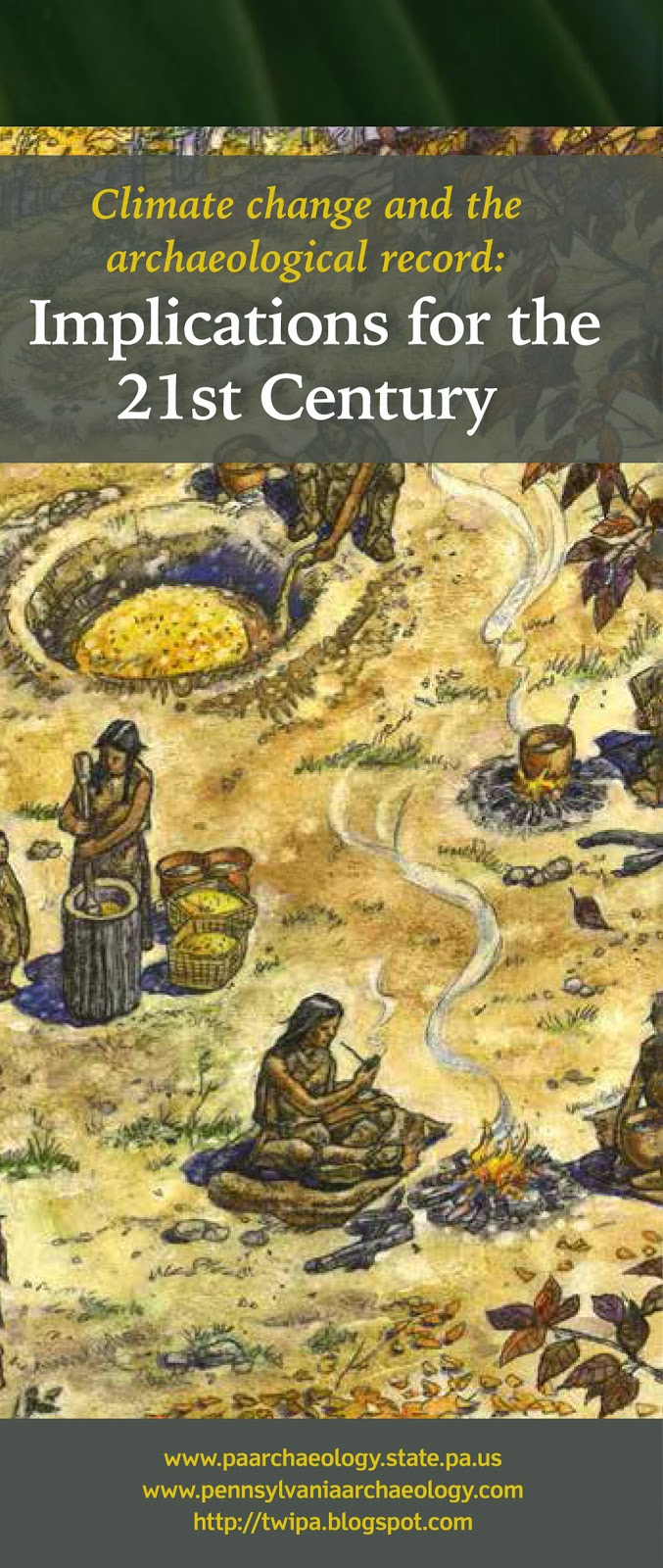In the
almost 25 years since the creation of the first website a lot of technical changes have occurred and we
have evolved from one site to over a billion sites. Obviously there is a lot of
information available on the web, and weeding out the accurate from the
inaccurate can sometimes be overwhelming.
Today, we’d like to direct you to the web site for the Pennsylvania
Historical & Museum Commission and more specifically to the Archaeology
Page.
Recently,
the State Museum’s Section of Archaeology has been actively improving its
website. Our goal to share resources through our current site has proven
difficult. In the next few months significant structural changes will be made,
and, if all goes well, a more navigable and useful website will emerge. Since
many of the biggest changes are yet to come, we will take you on a tour of the best
resources currently available on our website.
Section of Archaeology website
You may have
visited the Hall of Anthropology and Archaeology at the State Museum in
Harrisburg, but have you ever considered the items that are not on display? Our
exhibits represent only a fraction of our total collections. The collections summary page on our website has information
on notable prehistoric and historic artifacts curated by the State Museum
(there are over 6.5 million items in our collections). Researchers have
utilized this incredible resource to produce magazine and journal articles as
well as completing Master’s and doctorate degrees.
Pennsylvania
has a rich archaeological history, and educating the public about the past is a
primary goal. The Section of Archaeology’s website contains a wealth of
information, with a focus on Pennsylvania prehistory.
Check out
the Native American Archaeology section for overviews of each of the
prehistoric periods in Pennsylvania’s archaeological record. These sections
have been recently revised and updated to reflect our current understanding of
Pennsylvania’s first peoples.
Transitional Period painting by Nancy Bishop
Archaeology
conducted during the Great Depression as part of the New Deal continues to play a role in our
understanding of Native Americans in Pennsylvania. Our website hosts an entire section outlining excavations during this
time in America’s history. These pages contain a wealth of information on
excavations, artifacts, and current research as well as photographs of the men
who conducted the excavations.
From the
arrival of the first Europeans to a rich military history to agriculture and industry;
historic archaeology plays an
important role in understanding Pennsylvania’s history. Visit our pages on early settlement, military, canal, agricultural, and industrial archaeology to learn more about historical
archaeology in the Commonwealth.
Greenwood Furnace, PHMC Collections
Ways for you
to get involved with the State Museum’s Section of
Archaeology will soon be organized into a series of pages aptly titled “Get
Involved”. These pages will contain information on recording archaeological sites, avocational archaeology, as well as volunteer and internship opportunities with The State Museum
of Pennsylvania.
Professional resources, such as guidelines and policies, instructions for using the Cultural Resources Management Reports
Database, and
information on using our collections will continue to grow as our website is
improved.
Within our education pages, two school curriculums are available for teachers of grades
four through eight. For additional educational, archaeological, and PHMC
resources, visit our resource list.
Pennsylvania’s
history is our history, and the responsibility falls on us to educate the
public about archaeology, and the Section of Archaeology’s website is one of
the many ways in which we share these resources.







